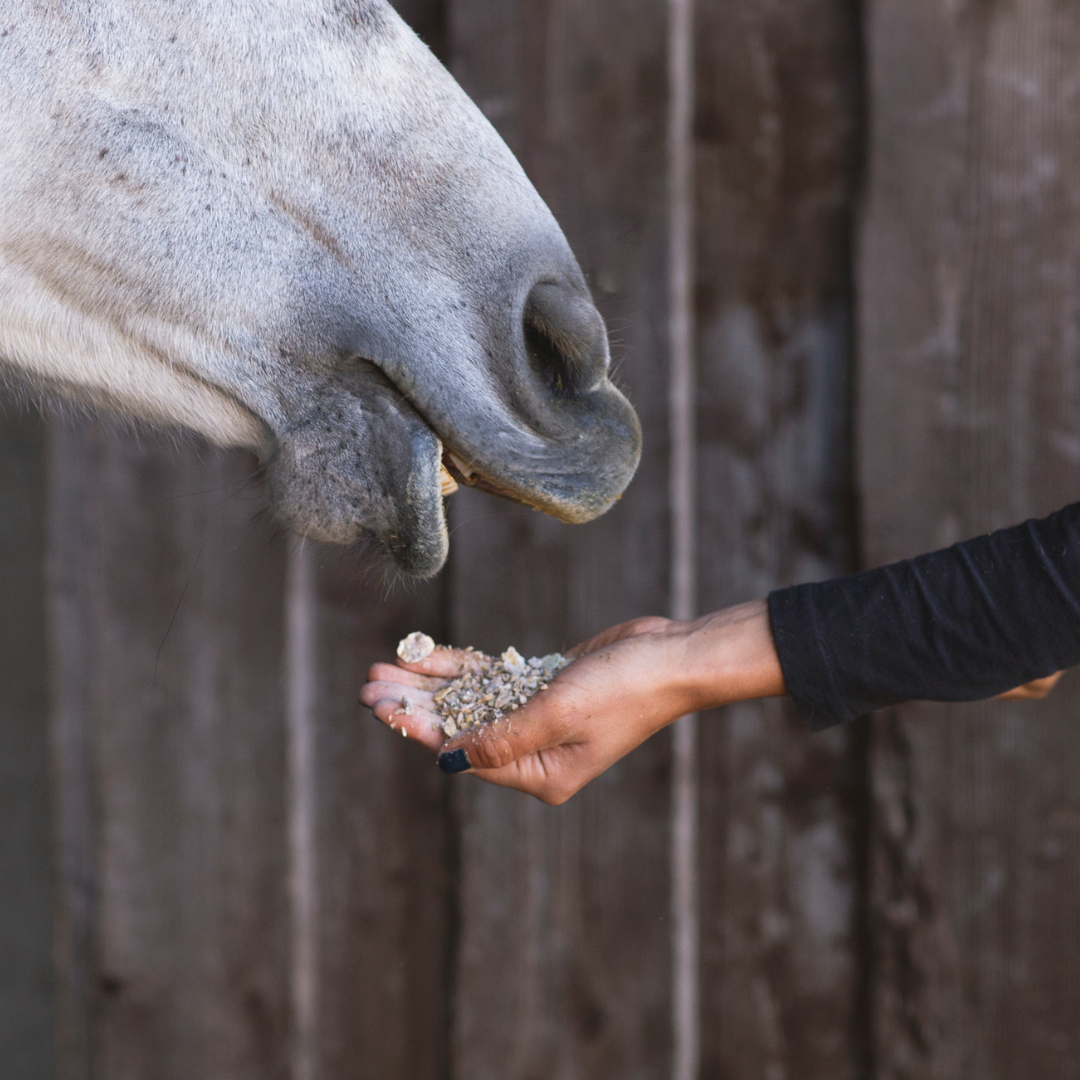Common Nutritional Disorders in Horses: Laminitis, Colic, and Equine Metabolic Syndrome
Share
Nutrition plays a vital role in a horse's overall health, and an improper diet can lead to serious health problems. While many horses thrive on a balanced, well-managed diet, others can suffer from various nutritional disorders if their dietary needs aren't met adequately. Conditions like laminitis, colic, and equine metabolic syndrome (EMS) are some of the most common and severe nutritional disorders that horse owners need to be aware of. Understanding these conditions, their causes, and how to manage them through proper nutrition is critical to preventing health complications and ensuring a horse's long-term well-being.

Laminitis: The Danger of Overfeeding
Laminitis is a painful and potentially life-threatening condition that affects the sensitive laminae in a horse's hooves. These laminae attach the coffin bone to the hoof wall, and when they become inflamed, the bone can separate from the hoof wall, leading to severe pain, lameness, and, in extreme cases, permanent hoof damage or euthanasia.
One of the primary causes of laminitis is dietary mismanagement, particularly overfeeding. Horses that consume large amounts of sugars and starches, often found in lush pasture grass or grain-heavy diets, are at an increased risk. This overconsumption can lead to spikes in blood sugar and insulin levels, triggering laminitis. Overweight horses or those with preexisting conditions like equine metabolic syndrome (EMS) are especially prone to developing laminitis.
To prevent laminitis, it's essential to regulate a horse's carbohydrate intake, particularly during periods of rapid grass growth in the spring and fall. At-risk horses should be kept on a controlled diet with limited access to lush pasture, and grain should be fed sparingly. Low-sugar, high-fiber diets, including high-quality hay and forage, are recommended for these horses. Even at a light level, regular exercise can also help manage weight and improve insulin sensitivity, reducing the risk of laminitis.
Colic: A Serious Digestive Disorder
Colic is another common and potentially life-threatening condition that affects horses. It refers to any form of abdominal pain but often relates to digestive distress. The causes of colic can be numerous, but many cases are related to diet and feeding practices. Horses have sensitive digestive systems; issues like sudden dietary changes, high-grain diets, insufficient forage, dehydration, and poor feeding management can all contribute to colic.
There are several types of colic, including gas colic, caused by excessive gas buildup; impaction colic, where undigested feed or foreign material blocks the intestines; and spasmodic colic, characterized by intestinal cramping. Regardless of the type, colic can lead to severe pain, restlessness, sweating, and rolling. In some cases, colic can resolve on its own, but in others, it requires emergency veterinary care and may even lead to surgery or euthanasia.
One of the best ways to prevent colic is through consistent feeding practices. Horses should have constant access to clean, fresh water and adequate forage. Forage, such as hay or pasture, helps the digestive system function properly and prevents blockages that could lead to impaction. Grain and concentrate feeds should be fed in small amounts and divided into multiple meals rather than one large feeding, as large grain meals can disrupt digestion and lead to gas buildup or colic. Finally, making any dietary changes gradually over 7-10 days can help prevent digestive upset.
Equine Metabolic Syndrome (EMS): The Role of Insulin Resistance
Equine Metabolic Syndrome (EMS) is a metabolic disorder characterized by insulin resistance, obesity, and a predisposition to laminitis. Horses with EMS have an abnormal insulin response, a hormone responsible for regulating blood sugar levels. As a result, they experience elevated insulin levels and blood sugar imbalances, which can increase the risk of laminitis.
EMS is often associated with easy-keeping breeds, such as ponies and some Warmbloods, which are prone to weight gain even on minimal rations. Overweight horses or those with "cresty" necks and fat deposits around the tailhead are more likely to have insulin resistance and be at risk for EMS. The condition is closely linked to diet, particularly high-sugar and high-starch feeds.
Managing EMS requires strict dietary control to reduce sugar and starch intake while promoting weight loss. Horses with EMS should be fed low-carbohydrate diets, primarily consisting of low-sugar forage like mature grass hay. Restricting or eliminating access to lush pasture, especially during times of rapid growth, is critical for horses with this condition. Additionally, regular exercise is essential to improve insulin sensitivity and promote weight loss. Horses diagnosed with EMS should have their diet carefully monitored, and veterinary advice should be sought to establish an appropriate feeding plan that meets their individual needs.
Recognizing and Addressing Nutritional Disorders Early
While laminitis, colic, and EMS are some of the most common nutritional disorders in horses, they are preventable or manageable with the right approach to feeding and care. Regular body condition scoring (BCS) is a valuable tool to monitor a horse's weight and body fat, allowing owners to adjust feeding plans before a horse becomes overweight or underweight. Regular veterinary check-ups can also help detect early signs of these conditions, ensuring prompt intervention.
Maintaining a balanced diet with adequate forage, appropriate amounts of grain or concentrate, and constant access to fresh water is vital to preventing these and other nutritional disorders. Each horse's dietary needs are unique, so it's important to tailor their feeding program based on their individual metabolism, activity level, and health status.
Nutritional disorders like laminitis, colic, and equine metabolic syndrome can significantly impact a horse's health and quality of life. However, horse owners can take proactive steps to prevent them by understanding the causes and risk factors associated with these conditions. A well-managed feeding program, regular body condition monitoring, and early intervention can help ensure your horse remains healthy, happy, and free from these severe disorders. If you're ever in doubt about your horse's diet or risk factors for these conditions, consulting an equine nutritionist or veterinarian is the best course of action to safeguard their well-being.

